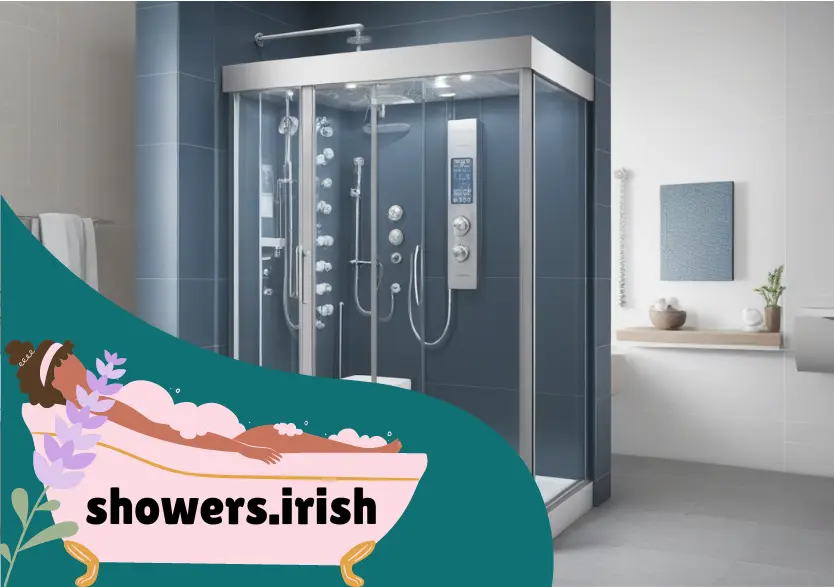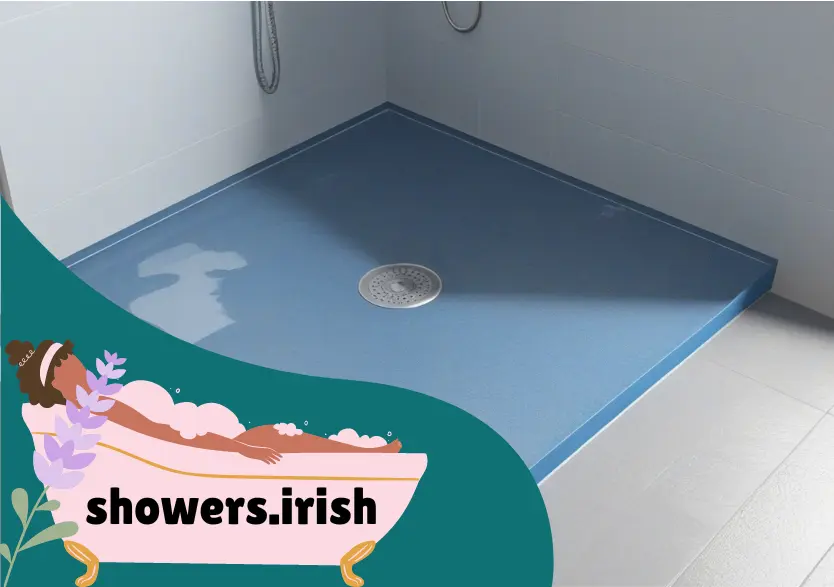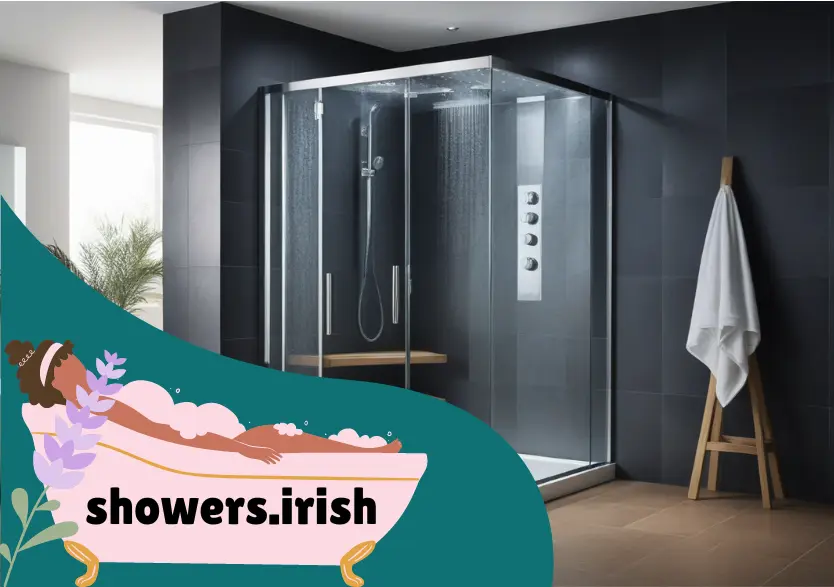Installing a steam shower or a wet room shower tray can transform your bathroom into a luxurious retreat. These enhancements not only elevate the functionality of your space but also increase its value. In this comprehensive guide, we’ll walk you through the entire process of installation, covering essential steps, tips, and best practices for both steam showers and wet room shower trays. By the end, you’ll be well-equipped to undertake these projects and achieve professional results.
Understanding Steam Showers
Steam showers are more than just a fancy addition to your bathroom; they offer a blend of comfort, wellness, and luxury. By understanding the key components and benefits of steam showers, you can make an informed decision about whether they are right for you and your space.
What is a Steam Shower?
A steam shower combines the benefits of a traditional shower with the soothing effects of a steam room. It uses a steam generator to produce steam that fills the enclosure, providing a relaxing and therapeutic experience. Typically, a steam shower includes a steam generator, a control panel, and an enclosure designed to trap steam. The generator heats water to create steam, which is then released into the enclosed space. This setup allows you to enjoy a spa-like experience at home, complete with all the health and relaxation benefits.
Benefits of Installing a Steam Shower
Steam showers offer numerous advantages that go beyond just a relaxing experience. They can improve respiratory health by opening up nasal passages and aiding in the elimination of toxins. The steam can also hydrate your skin, making it look and feel healthier. Furthermore, steam showers can help relieve muscle tension and stress, promoting overall wellness. For many people, the addition of a steam shower can enhance their quality of life, providing a sanctuary of relaxation in the comfort of their own home.
Key Components of a Steam Shower System
To successfully install a steam shower, you need to understand its key components. The primary parts include the steam generator, control panel, and the enclosure. The steam generator is responsible for producing the steam, while the control panel allows you to set the desired temperature and duration. The enclosure, usually made of glass or tile, keeps the steam contained and ensures an even distribution. Understanding these components will help you select the right system for your needs and ensure a smooth installation process.
Preparing for Installation
Before you begin the installation of a steam shower, preparation is crucial. This involves measuring your space to ensure that the shower fits properly, checking for adequate ventilation, and ensuring that your plumbing and electrical systems can handle the demands of the steam generator. Proper preparation will help you avoid common pitfalls and ensure that the installation goes smoothly.
Installing a Steam Shower
The installation process for a steam shower requires careful planning and execution. From selecting the right system to ensuring proper ventilation, every step is important to achieve a successful installation.

Choosing the Right Steam Shower System
Selecting the right steam shower system involves considering several factors, such as the size of your bathroom, the steam generator’s capacity, and the type of enclosure you prefer. Look for a system that fits your space and meets your requirements for steam output and temperature control. Additionally, consider features such as lighting and seating options that can enhance your steam shower experience.
Preparing the Space for Installation
Preparing the space for your steam shower involves clearing the area, making necessary modifications to the plumbing and electrical systems, and ensuring that the walls and floor are properly waterproofed. It’s important to follow manufacturer guidelines and local building codes to ensure a safe and effective installation. Proper preparation will help you avoid potential issues and ensure that your steam shower functions as intended.
Installing the Steam Generator
The steam generator is a critical component of your steam shower system. It should be installed according to the manufacturer’s instructions, usually in a location that is easily accessible for maintenance. Connect the generator to your water supply and electrical system, ensuring that all connections are secure and comply with local codes. Once installed, test the generator to ensure it is functioning properly.
Installing the Enclosure
The enclosure is the part of the steam shower that contains the steam and provides a comfortable space for you to enjoy. Install the enclosure according to the manufacturer’s guidelines, making sure that all seams and joints are properly sealed to prevent steam from escaping. Ensure that the door is properly aligned and that the enclosure is securely fastened.
Understanding Wet Rooms
Wet rooms are modern and minimalist alternatives to traditional shower spaces. They are designed to be completely waterproof, offering a sleek and open showering experience. Understanding the characteristics of wet rooms can help you decide if this style is right for your bathroom.
What is a Wet Room?
A wet room is a bathroom design where the shower area is open and seamlessly integrated into the rest of the room. It is designed with a slight slope towards a drain to ensure that water flows away efficiently. The entire space, including the floor and walls, is waterproofed to prevent water damage. Wet rooms are known for their clean and contemporary look, as well as their accessibility and ease of maintenance.
Benefits of Installing a Wet Room Shower Tray
Wet room shower trays are designed to be level with the rest of the floor, creating a seamless transition between the shower and the rest of the bathroom. They are ideal for those who prefer a modern, open look and want to avoid the complications of a traditional shower enclosure. Benefits include ease of cleaning, a barrier-free design that is ideal for those with mobility issues, and the ability to create a visually spacious environment.
Choosing the Right Wet Room Shower Tray
When selecting a wet room shower tray, consider factors such as size, material, and drainage capabilities. The tray should be large enough to accommodate your showering needs and constructed from durable materials that can withstand frequent use. Additionally, ensure that the tray has an effective drainage system to prevent water pooling and potential damage.
Preparing for Wet Room Installation
Proper preparation is key to a successful wet room installation. This involves waterproofing the entire area, ensuring proper drainage, and making any necessary modifications to the existing plumbing. It’s essential to follow manufacturer instructions and building codes to ensure a watertight and functional installation. Proper preparation will help prevent leaks and ensure that your wet room performs effectively.
Installing a Wet Room Shower Tray
The installation of a wet room shower tray requires attention to detail to ensure proper drainage and a seamless finish. By following the correct steps, you can achieve a professional and durable result.

Selecting the Right Materials
Choosing the right materials for your wet room shower tray is crucial for durability and performance. Opt for high-quality materials that are resistant to water damage and easy to clean. Common choices include acrylic, fiberglass, and ceramic. Ensure that the materials you select are compatible with your existing bathroom fixtures and fittings.
Installing the Shower Tray
The installation of the shower tray involves preparing the floor, positioning the tray, and securing it in place. Begin by ensuring that the floor is level and free from debris. Position the tray according to the manufacturer’s instructions, making sure it is aligned with the drainage system. Secure the tray in place using the appropriate adhesive or fixing method, and allow it to set before proceeding with the rest of the installation.
Waterproofing the Wet Room
Waterproofing is a critical step in wet room installation to prevent water damage and leaks. Apply a waterproof membrane to the floor and walls, ensuring that all seams and joints are properly sealed. Pay special attention to areas around the shower tray and any other fixtures. Once the membrane is applied, allow it to cure completely before proceeding with tiling or other finishing work.
Tiling and Finishing Touches
After waterproofing, you can proceed with tiling the floor and walls of your wet room. Choose tiles that are both stylish and practical, with slip-resistant properties for safety. Install the tiles according to the manufacturer’s guidelines, ensuring that grout and sealant are applied to prevent water infiltration. Complete the installation with any additional finishing touches, such as shower screens or storage solutions.
Conclusion
Installing a steam shower or a wet room shower tray can significantly enhance your bathroom, providing both luxury and functionality. By understanding the components and installation processes for each, you can make informed decisions and execute the projects with confidence. Whether you choose a steam shower for its therapeutic benefits or a wet room for its modern appeal, careful planning and execution are key to achieving excellent results.
For further reading and resources, consider exploring additional guides on bathroom remodeling, or consult with a professional to ensure your installation meets all safety and design standards. Ready to start your bathroom transformation? Dive into your project with these insights, and enjoy the new level of comfort and style in your home!
Sure! Here are five frequently asked questions (FAQs) based on the content about installing steam showers and wet room shower trays:
1. What are the main benefits of installing a steam shower?
Answer: Installing a steam shower offers several benefits, including improved respiratory health, enhanced skin hydration, stress relief, and muscle relaxation. Steam showers also provide a luxurious spa-like experience at home, promoting overall wellness and relaxation.
2. How do I choose the right steam shower system for my bathroom?
Answer: To choose the right steam shower system, consider factors such as the size of your bathroom, the steam generator’s capacity, and the type of enclosure. Ensure that the system fits your space and meets your needs for steam output and temperature control. Look for additional features like lighting and seating that enhance your experience.
3. What is a wet room, and why might I want one?
Answer: A wet room is a bathroom design where the shower area is open and seamlessly integrated with the rest of the room. It is fully waterproofed and features a level floor with a slight slope towards a drain. Wet rooms offer a modern, minimalist look, easy cleaning, and barrier-free access, making them ideal for contemporary homes and those with mobility concerns.
4. What are the key steps in installing a wet room shower tray?
Answer: The key steps in installing a wet room shower tray include preparing the floor by ensuring it is level and clean, positioning and securing the tray in place, applying a waterproof membrane to prevent leaks, and tiling the area. Proper preparation and waterproofing are essential to ensure a functional and durable installation.
5. Do I need professional help to install a steam shower or wet room shower tray?
Answer: While it is possible to install a steam shower or wet room shower tray yourself, professional help is recommended for ensuring proper installation and adherence to local building codes. Professionals can handle complex tasks such as plumbing and electrical work, as well as ensure that all components are installed correctly and function as intended.
If you’re considering upgrading your bathroom with a new shower installation, exploring options beyond steam showers and wet rooms can also be valuable. For instance, electric showers offer a convenient and energy-efficient solution for modern homes. They provide instant hot water without the need for a separate boiler or hot water tank, making them ideal for homes with limited space or those looking to reduce energy consumption.
For a detailed guide on installing an electric shower, including tips and step-by-step instructions, check out this comprehensive post on installing a Mira electric shower: Installing a Mira Electric Shower. Whether you’re enhancing your bathroom with a steam shower, a wet room, or an electric shower, this resource will provide you with the essential information needed for a successful installation.
Credit Website: www.ireland.ie/
